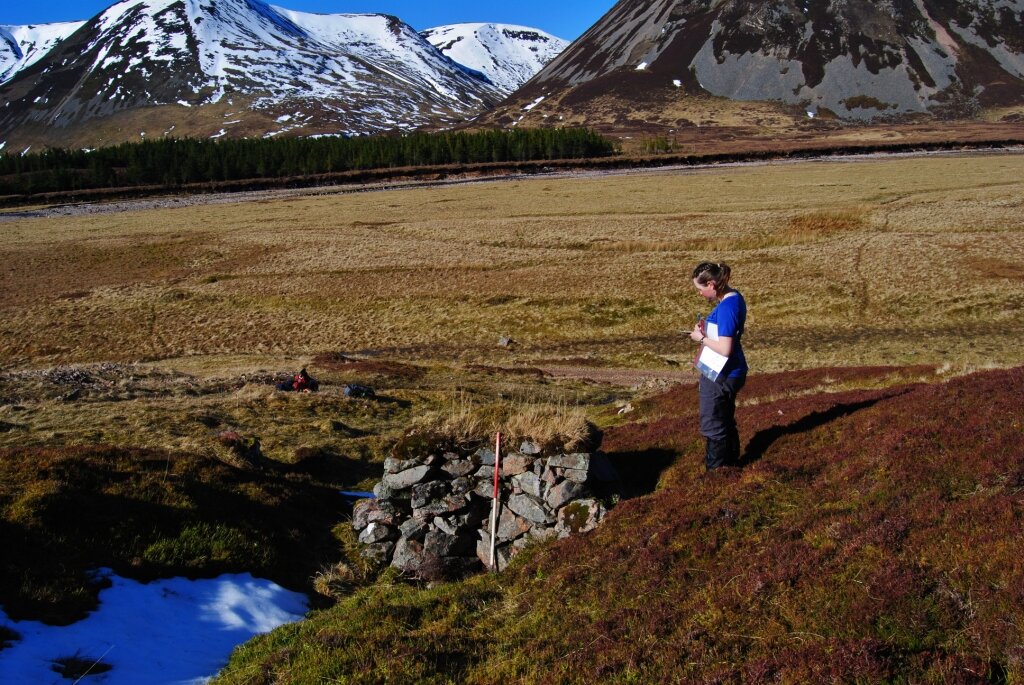Glen Tromie: Traces of the History of a Shooting Estate
Archaeologists from AOC’s Inverness office conducted a detailed landscape survey in Glen Tromie, near Kingussie in Badenoch and Strathspey on behalf of Wildland Ltd as part of estate management surveys. Seventy-nine archaeological sites were recorded in the southern half of Glen Tromie within Lynaberack and Gaick Estates. A total of 170 individual structures relating to post-medieval settlement, cultivation and animal husbandry were identified. Shooting hides and stances evidencing the estate’s sporting history were also recorded. The works have provided full records of numerous abandoned post-medieval settlements and previously unknown shieling settlements in the glen, in addition to recording the position of former shooting butts and other relics of a long history of the shooting estate.
The upland landscape, consisting primarily of moorland with improved ground along the River Tromie forced its past inhabitants to follow a subsistence strategy heavily dependent on pastoralism and transhumance. In the 17th century, Glen Tromie contained ‘summer towns’, an old term for shielings, though these were, unusually, used for cultivation rather than livestock. Lyneberack was used as such a temporary summer town with the farmers returning with their harvest before winter to the permanent townships lower down the glen. However, by 1750, leases show that Lyneberack had become a permanent farm; while in 1782, 10,000 acres of Gaick had been rented out for sheep farming.
The archaeological survey recorded consistent evidence for the abandoned farmsteads of Glen Tromie being re-used later for stock management. Substantial, previously unrecorded shieling settlements located along small burns were also mapped. Together the data has provided a detailed record of the pastoral subsistence economy and the transition of the land from settled farmsteads to large sheep farms to sporting estate.




